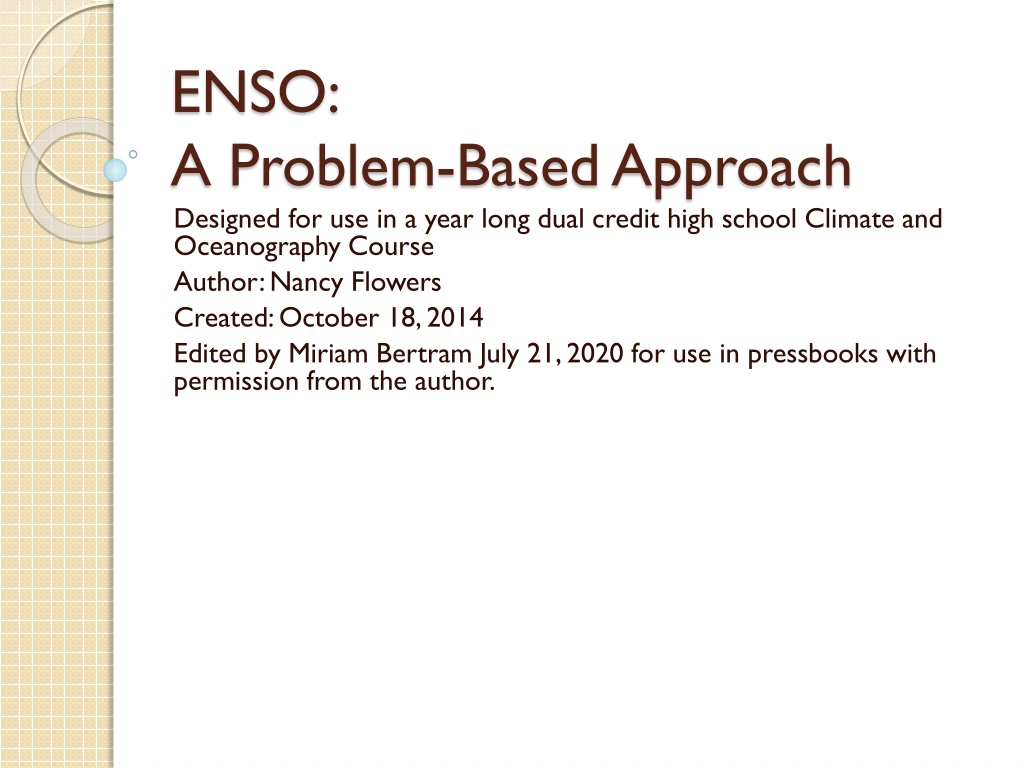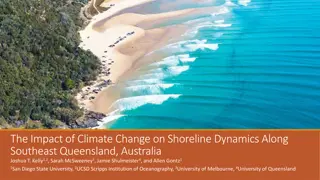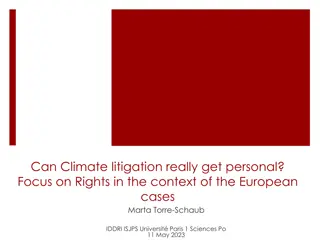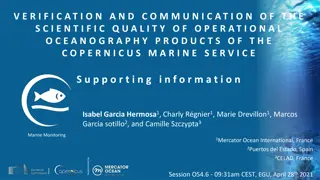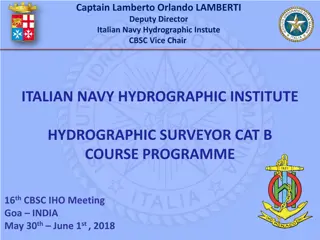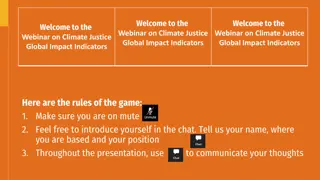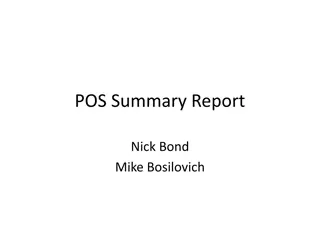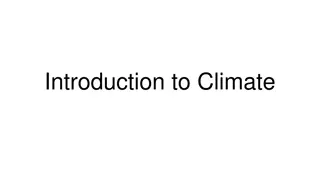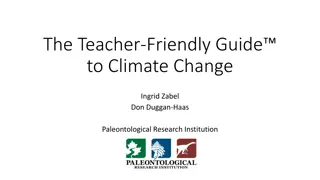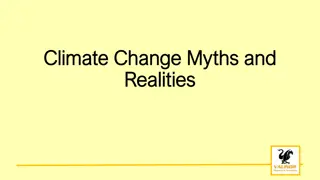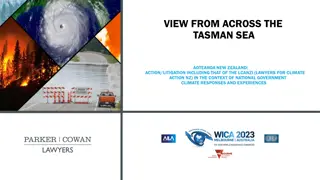Exploring ENSO: A Climate & Oceanography Course Approach
Dive into ENSO through a problem-based curriculum designed for high school Climate and Oceanography courses. Follow the journey of understanding El Niño and La Niña events, their impact on the Pacific Northwest, and how they influence decisions such as choosing between season passes and daily rates for ski activities.
Uploaded on Sep 12, 2024 | 0 Views
Download Presentation

Please find below an Image/Link to download the presentation.
The content on the website is provided AS IS for your information and personal use only. It may not be sold, licensed, or shared on other websites without obtaining consent from the author. Download presentation by click this link. If you encounter any issues during the download, it is possible that the publisher has removed the file from their server.
E N D
Presentation Transcript
ENSO: A Problem-Based Approach Designed for use in a year long dual credit high school Climate and Oceanography Course Author: Nancy Flowers Created: October 18, 2014 Edited by Miriam Bertram July 21, 2020 for use in pressbooks with permission from the author.
Brief Bio I ve been teaching at Everett High School for 28+ years Core teaching assignments have been AP Chemistry and General Chemistry I have taught the dual enrollment UWHS Ocean 101 for several years. I helped write curriculum for UWHS ATMS 211 (climate) and taught the full course.
The Problem Ski season is approaching, and your family must decide by Oct. 31 whether to buy season passes at Stevens Pass, or pay the more expensive daily rate. What information would you need to collect to make your decision?
El Nio & PNW Winters In your opinion, how do El Ni o and La Ni a events impact temperature and precipitation in the Pacific Northwest? Do you have any personal history related to El Ni o or La Ni a events? How might this impact your decision to buy a season pass, instead of paying the higher daily rate? Please insert your own exciting ski photo.
To make our decision, we need to 1. Understand neutral (normal), El Ni o and La Ni a conditions in the tropical Pacific. 2. Use tropical Pacific buoy data to make a climate prediction for winter, 2014-2015. 3. Examine the correlation between precipitation patterns in the Pacific Northwest and El Ni o/La Ni a events.
Facilitated small group discussions How are atmospheric and oceanic conditions different during neutral (normal), El Ni o and La Ni a conditions in the tropical Pacific?
PMEL Data The TAO/TRITON system consists of 70 moored buoys in the tropical Pacific Data is collected and delivered via satellite to shore-based stations Photo downloaded from https://www.pmel.noaa.gov/gtmba/moorings.
Working with TAO/Triton Data Click on Lat/Long plots Use Monthly time range Select 2011, December Click Make Plot! You are viewing a Sea Surface Temperature graph from 10 S to 10 N, across the Pacific from South America to Australia
December, 2011: Normal, El Ni o or La Ni a? Evidence?
Now try the same analysis: December, 1997 El Ni o or La Ni a? Evidence?
Make a plot for September, 2014 What s your analysis?
Tropical Pacific SSTs Tropical Pacific SSTs are normally cold (< 26 C) along a narrow band along the equator in the central and eastern Pacific This is caused by easterly trade winds along the west coast of South America and Ekman transport of surface water towards the west Cold water upwells along the west coast of South America and moves west along the equator Coastal Upwelling Animation
Cold Tongue Index The region of equatorial cold SSTs is referred to as the cold tongue The cold tongue index is defined as the SST anomaly from 6 N to 6 S and 90 W to 180 W
Reading the CTI A positive CTI means SSTs in the region are warmer than normal El Ni o conditions A negative CTI means SSTs in the region are colder than normal La Ni o conditions
Data Analysis CTI and precipitation in Indonesia Open the ENSO investigation spreadsheet Select the first tab Cold Tongue, Indonesia Select cells A1-B61. Make a scatter plot of year vs. CTI. Can you spot the La Ni a and El Ni o years?
Data Analysis Year CTI Index El Ni o or La Ni a? High or low precipitation expected? 1951 0.76 1955 -1.12 1982 2.06 1997 2.10 2000 -0.64 2007 -1.27
CTI vs. Indonesia Precipitation Click and drag to select cells A1-C61. Insert a scatter plot. Right-click on the red Indonesia line, select Secondary Axis Stretch the graph out for ease of viewing.
CTI vs. Precip in Indonesia 2.50 0.00012 2.00 0.0001 1.50 1.00 0.00008 0.50 Cold Tongue Index 0.00006 0.00 Indonesia Precipitation 1940 1950 1960 1970 1980 1990 2000 2010 2020 -0.50 0.00004 -1.00 0.00002 -1.50 -2.00 0 Can you see any trends?
Using Math We can use statistics to confirm our visual inspection We will calculate the correlation coefficient between CTI and Indonesia Precipitation
Calculating the Correlation Coefficient In cell F57, enter the following formula: =correl(B31:B52,C31:C52) ENTER View the Correlation Coefficient in cell F57
Interpreting the Correlation Coefficient 1 strong direct relationship -1 strong inverse relationship 0 no relationship For a correlation coefficient of -0.889, describe the relationship between the CTI and Indonesian Precipitation
Back to Ski Season! Based on predicted climate impacts on the second tab in the SS, predict precipitation patterns in Everett during a typical La Ni a and El Ni o year Predict the El Ni o or La Ni a impact on snowfall at Mt. Rainier
PNW Data Note Mt. Rainer precipitation is yearly snowfall Everett data is Oct-Mar rainfall Make a scatter plot of CTI vs. Snowfall at Mt. Rainier Calculate the correlation coefficient Make a scatter plot of CTI vs. Oct-Mar Rainfall in Everett Calculate the correlation coefficient
1400 2.50 2.00 1200 1.50 1000 1.00 800 0.50 Snowfall, Paradise, Mt. Rainier; inches 0.00 600 Cold Tongue Index -0.50 400 -1.00 200 -1.50 0 -2.00 1940 1950 1960 1970 1980 1990 2000 2010 2020 40 2.50 2.00 35 1.50 30 1.00 25 0.50 Oct-Mar Rainfall, Everett; inches 20 0.00 Cold Tongue Index 15 -0.50 10 -1.00 5 -1.50 0 -2.00 1940 1950 1960 1970 1980 1990 2000 2010 2020
Decision Time! Based on your analysis of: September TAO SST data in the tropical Pacific Correlation of conditions in the tropical Pacific (CTI) with historic precipitation and snowpack data in the PNW Should you buy a season s ski pass this year?
What Does Cliff Say? Blog
